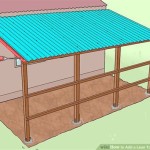How to Treat a Concrete Garage Floor
A concrete garage floor is often the first thing people think of when they are considering adding a new room to their home. Concrete is a durable material, and it can be stained, sealed, and painted to create a variety of looks. But before you can enjoy the benefits of a new concrete floor, you need to treat it. This is important for several reasons. First, treating a concrete floor can help to prevent stains and spills from soaking in, making cleaning easier in the future. Second, treating a concrete floor can help to protect it from the damaging effects of UV rays and harsh chemicals. Finally, treating a concrete floor can simply make it look better and enhance the aesthetic appeal of your garage.
Cleaning the Concrete Floor
The first step in treating a concrete floor is to clean it thoroughly. This will remove any dirt, grease, or other debris that could interfere with the treatment process. To clean your floor, you can use a commercial concrete cleaner or a mixture of water and detergent. Be sure to follow the manufacturer’s instructions for the cleaning solution you choose. Once you have cleaned the floor, allow it to dry completely before moving on to the next step.
Applying a Sealer
Once the concrete floor is clean and dry, you can apply a sealer. Sealers are designed to protect the concrete from moisture, stains, and other damage. They also help to enhance the appearance of the floor by making it look more polished and uniform. There are several different types of sealers available, so you can choose one that is best suited for your needs and budget. Some common types of sealers include acrylic sealers, epoxy sealers, and penetrating sealers.
Acrylic sealers are a popular choice for garage floors because they are easy to apply and relatively inexpensive. They provide a good level of protection against moisture and stains, but they are not as durable as epoxy sealers. Epoxy sealers are more expensive than acrylic sealers, but they offer superior protection against moisture, stains, chemicals, and abrasion. Penetrating sealers are designed to soak into the concrete and form a barrier against moisture and stains. They are a good choice for floors that are exposed to heavy traffic or harsh conditions.
Applying a Stain
If you want to add color or pattern to your concrete floor, you can apply a stain after sealing it. Concrete stains are available in a variety of colors, and they can create a variety of effects, from subtle variations in color to bold patterns. Stain is applied to concrete just as you would any other stain. Simply apply it liberally to the concrete and allow it to dry. You can even use stencils to create custom patterns.
If you are applying a stain to your concrete floor, be sure to choose a sealer that is compatible with the stain. Some sealers can react with stains and create an undesirable finish. It is always best to consult with a professional before applying any stain to your concrete floor.
Applying a Topcoat
Once the stain has dried, you can apply a topcoat to seal the stain and protect the floor from wear and tear. There are many different types of topcoats available, and the best choice for your garage floor will depend on your specific needs. For example, if you plan to park your car on the floor, you will need a topcoat that can withstand the weight and pressure of a vehicle.
When choosing a topcoat, It is important to familiarize yourself with the various types of coatings. Some topcoats offer a more durable, glossy finish, while others offer a more matte finish. For example, polyurethane topcoats are highly durable and resistant to stains and chemicals, making them ideal for high-traffic areas like garages. However, polyurethane topcoats can be difficult to apply and require proper ventilation for drying. Other topcoats offer a more decorative finish, such as epoxy coating and polyaspartic coating. Epoxy coating is a durable and aesthetically pleasing option, typically offering a smooth and glossy finish. Polyaspartic coating is a newer type of coating that offers excellent durability and a quick curing time. It is also known for its high resistance to chemicals and UV rays, making it a suitable choice for outdoor applications.
Applying a topcoat can be a challenging task, requiring careful preparation and application techniques. It is also important to choose the right type of topcoat for your specific needs and budget. If you are unsure about which topcoat is best for your garage floor, it is always best to consult with a professional.

How To Seal A Concrete Garage Floor With Pva Part 1

How To Damp Proof Concrete Floors Permagard

How I Painted My Concrete Garage Floor Before After True Value

Garage Floor Paint Paints Coatings Resincoat
5 Options For Covering Garage Floors

9 Garage Floor Protection Options Ranked From Best To Worst

Dusty Garage Floor Permanent Solution For Concrete

Easily Repair Your Pitted Or Spalled Garage Floor All Floors

Garage Floor Coatings Polyurea And More Options

Garage Concrete Floor Slab Construction Thickness And Cost The Constructor
Related Posts








